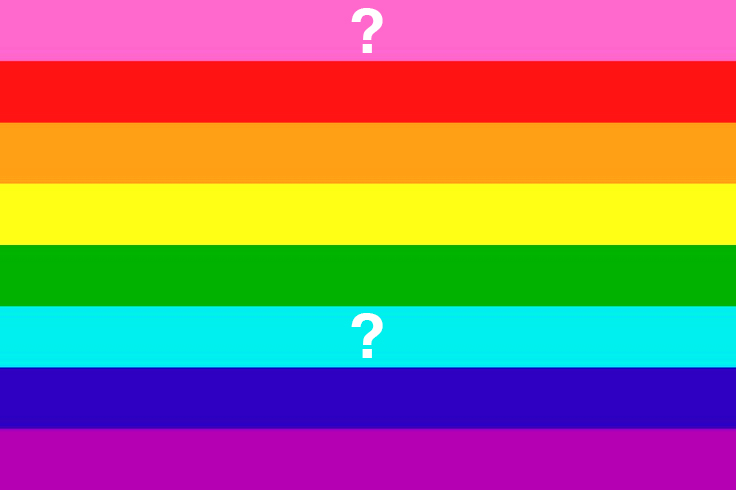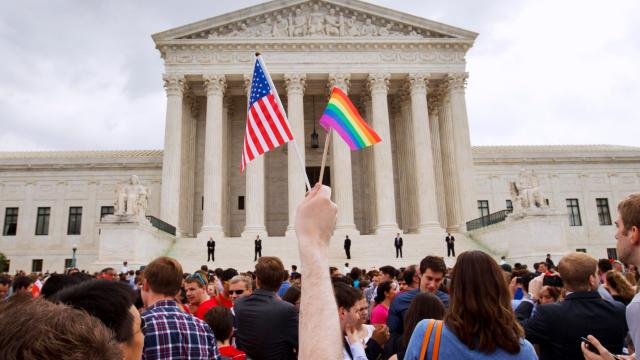As people all over the US and the world celebrate the Supreme Court’s landmark decision legalising same-sex marriage, it seems like the whole internet is painted rainbow. There’s actually an interesting story behind the pride flag’s current colours.
Most pride flags consist of six colours: red, orange, yellow, green, blue and violet. Yesterday in a great interview on Refinery 29, we met the guy who designed it: One Gilbert Baker, an artist and activist who designed the flag in 1978 (according to the interview, Baker also has a drag persona named, awesomely, Busty Ross).
But Baker’s original flag actually had eight colours, including a pink and turquoise stripe. So why don’t we fly that one today?

There’s an interesting reason for each exclusion. Back when Baker first designed the flag, he went looking for a distributor who could manufacture his design for use in the 1978 Pride Parade in San Francisco.
He turned to Paramount Flag Co, a flag company that had been around since the 1930s (it no longer exists today). But Paramount had a problem: The hot pink fabric, which represented sexuality, wasn’t in high demand, as CRW Flags explains and as The New York Times confirmed a few years ago:
When Baker approached Paramount to make flags for the 1979 Gay Freedom Day Parade, Paramount informed Baker that fabric for hot pink was not available for mass production, and Baker dropped the hot pink stripe.
It turns out Baker would later go to work for Paramount, and eventually design flags for countries and events all over the world.
So what about the turquoise? While Refinery 29 simply says it was too tough to manufacture too, a plethora of sources including Gay Pride New Orleans’ history, say it was about making the flag more street-ready after the assassination of Harvey Milk:
Wishing to demonstrate the gay community’s solidarity in response to this tragedy, the 1979 Pride Parade Committee decided to use Baker’s flag in honour of Milk. The committee eliminated the turquoise stripe so they could divide the colours evenly as they walked the parade route, three colours on one side of the street and three on the other.
Syracuse New Times, meanwhile, has a similar story — but says, instead, that it was due to the challenge of splitting the colours in half to evenly hang on posts. Smaller changes were made, too. Commenter Mooslug points out that the former indigo stripe was shifted to a more classic “royal blue” in time.
So the pride flag’s design was shaped by the circumstances of the gay rights movement — first, by necessity as Gilbert looked for a supplier who could produce them industrially for use in the early days of San Francisco’s pride marches. Then, by the widespread popularity of the flag and its evolution into a nation-wide symbol, which made its odd number of colours difficult to manipulate.
You’ll still see the original eight-colour design around, and you can actually buy one of Gilbert’s original eight-colour flags, which he stitches by hand. But these days, they’re art objects — and they will cost you. You can read Gilbert’s full interview here.
Picture: AP Photo/Jacquelyn Martin
